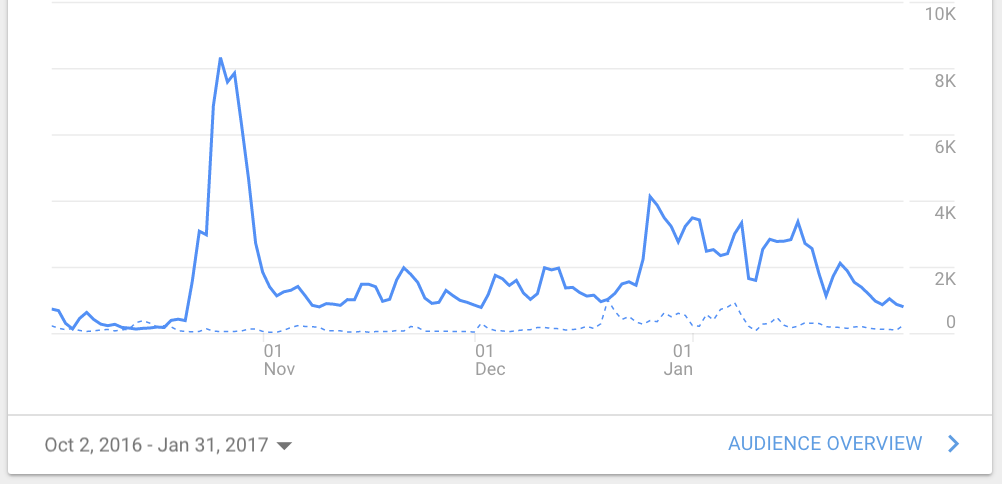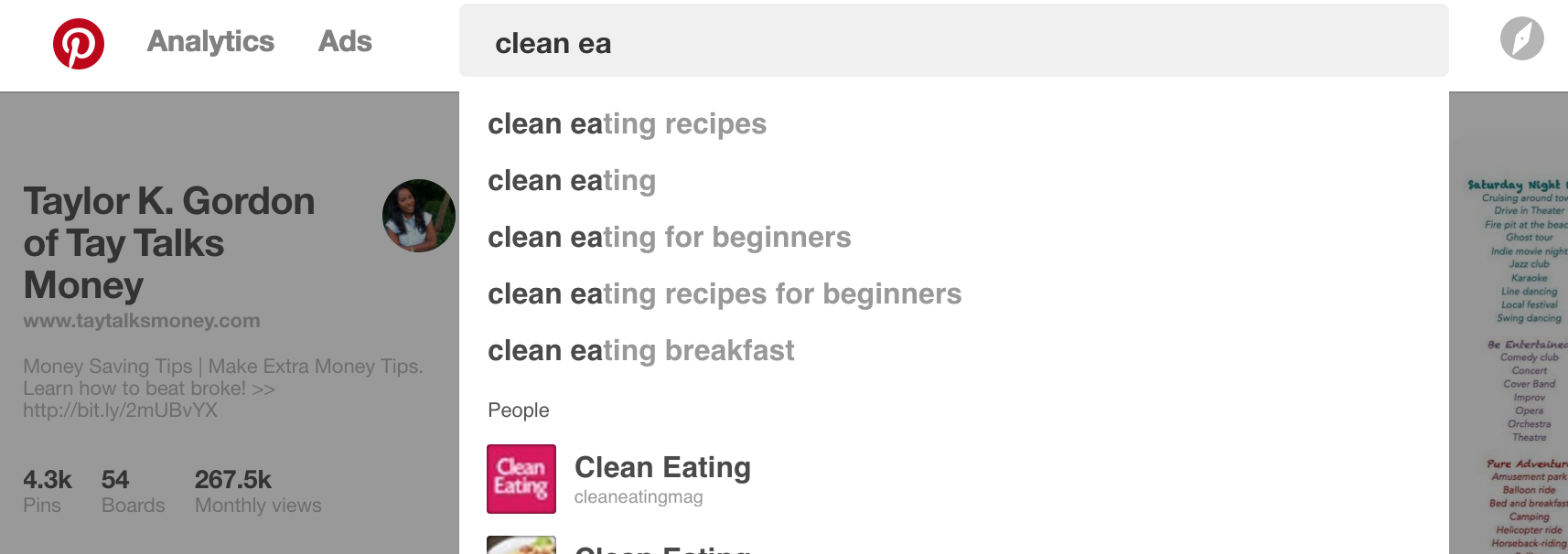Pinterest is a social media platform that has over 175 million users as of April 2017.
Unlike Facebook and Twitter where people primarily interact with friends, family, or celebrities, Pinterest is a powerful visual search engine.
Thanks to keyword optimization you can have a relatively small number of followers and still go viral on Pinterest. This is what happened to me last year when users seemed to connect with a post I created for the blog I use to promote my business.
It’s hard to tell exactly how many repins in total a piece of content gets on Pinterest, but for a ballpark estimate, my post has been shared over 100,000 times.
And this is how it impacted my traffic:

In this post, I’ll share what I did that helped my pins get a surge in reach.
I do want to preface by saying having a post go viral on Pinterest isn’t a perfect science.
It’s a combination of strategy and serendipity.
Here are steps that can help you on the strategy side of things:
Table of Contents
Toggle1. Write a headline that gives the audience a result they crave.
This is a tip I learned from the couple who blog at Chasing Foxes. I can tell you within a few weeks of implementing it I began seeing traffic from Pinterest.
Step into the minds of people who are searching Pinterest to increase your pin virality.
Pinterest is used predominately by women who are searching for solutions. They are looking for immediate answers to needs such as how to cook a healthy meal for dinner or how to lose weight before a vacation.
A blog post I wrote on 100+ things to do instead of spending money gained steam fast because it’s something a user can benefit from right away.
When creating titles for your pins think about angles that will give your audience something to do right now or an answer to a problem they can implement sooner than later.
These are the types of posts people want to repin.
2. Use bright and long photos with bold text.
Although graphic quality is important, an eye catching pin headline that addresses a problem can take off even if the graphic isn’t beautiful.
I’ve seen it time and time again. Here’s an example.
Even my viral pins are far from the prettiest ones I’ve ever designed yet they still do well.
So if you’re starting out with limited design experience, a simple free photo editor like Canva or PicMonkey can suffice as long as your photos are clear, they have bright colors, and the text is big enough to read on a mobile device.
Your pins should also be at least 735 pixels wide and 1102 pixels long.
3. Be intentional with keywords.
Again, since Pinterest is a search engine you want to add keywords to your pin descriptions that people are using.
Not only does Pinterest use pin descriptions to find keywords, but it also analyzes what’s in your photo to categorize it. This is something I learned from Pinterest consultant Kim Vij.
Make sure whatever photo you use is something relevant to your keyword otherwise you may come up in irrelevant search results which can decrease your click through rate.
To search for keywords, first make sure you have a Pinterest business account so you can review traffic analytics, then log into Pinterest and type potential keywords in the top search bar.
Pinterest will show a drop down menu with keywords people are already searching.

After clicking on a search term, you’ll see rectangular bubbles above the results with other keywords to consider as well.

4. Join group boards and pin regularly.
Whether group boards hold as much weight as they used to is up for debate, but joining group boards is still a good way to reach a wider audience if you have minimal followers.
A group board is one where a bunch of people are contributing to one collaborative board, and your pins get seen by more people.
You can search for Pinterest groups using the site PinGroupie.
Here’s a step-by-step guide for getting started with Pinterest groups that can help you with the process.
Lastly, you have to be pinning several times throughout the day for a pin to catch steam. I schedule pins using Tailwind.
Why Going Viral Isn’t the End All Be All
The biggest thing you should take away from my viral Pinterest experience is the need to address your audience’s pressing needs with Pinterest headlines.
You should also experiment — a lot.
My traffic ebbs and flows since my pins took off. However, thanks to their performance I’ve established a core audience and email list.
Anyone who goes super viral or even semi-viral will tell you that simply having one thing go big doesn’t mean your work is done. Far from it actually.
A viral post on Pinterest can bring rapid traffic, but it’s your job to create content and an email opt-in that keeps readers coming back for more.














